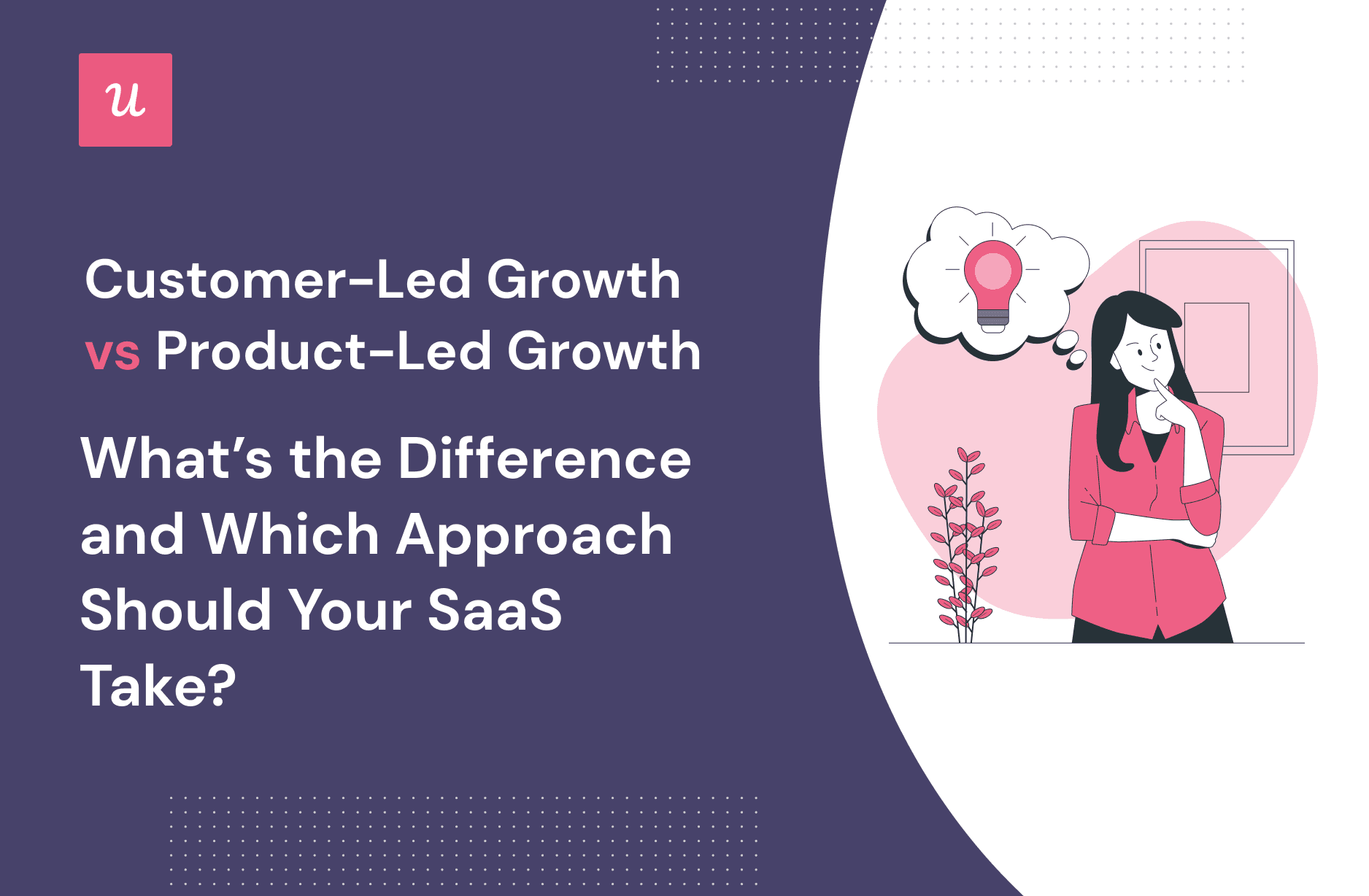
Customer-led Growth vs Product-led Growth: What’s the Difference and Which Approach Should Your SaaS Take?
Customer-led growth vs. product-led growth? Which one should your company rely on as part of your go-to-market strategy?
Whichever growth strategy you choose affects conversion rates, customer retention rates, and overall customer engagement. All in all, it’s the driving force for your product growth and company’s success.
In this post, we’ll compare both growth strategies, cover which one is right for your business, and give you actionable steps to implement them.
Try Userpilot Now
See Why 1,000+ Teams Choose Userpilot

Summary of customer-led growth vs product-led growth
- A customer-led growth strategy leverages user insights to provide the best customer experience.
- A product-led growth strategy relies on the product experience as the primary driver for revenue growth.
- SaaS businesses should use both models together.
- Focus on making an amazing product, collect user feedback, and then implement that feedback into product improvements.
- A reverse trial helps to boost conversions from free to paid customers. It gives people a chance to try out premium features for a limited time. If they don’t upgrade, they’re bumped back down to a free plan.
- Frictionless signup flows to speed up the time-to-value. To reduce friction, provide single sign-on options and don’t ask for payment upfront.
- Empty states are blank screens that display when there’s no data to show yet. They slow down product adoption. Instead, use welcome modals and demo content to keep activation energy high.
- Onboarding checklists lean on the Zeigarnik Effect – where users feel tension from leaving tasks unfinished.
- Use in-app guidance regularly to educate existing customers, even long after onboarding is done.
- Give users self-service options, like video tutorials and help articles, to improve customer success.
- Collect customer data during the onboarding process. That way, you can segment them and deliver personalized experiences from day one.
- Track product usage analytics and user behavior to see where friction happens in the product journey.
- Ask for feedback directly with a mix of in-app microsurveys and a Voice of the Customer Program.
- Organize NPS survey responses with tags – identify the patterns behind low customer satisfaction.
- Close the customer feedback loop by being transparent about where user feedback is impacting product changes.
- Use a customer-facing roadmap to share plans, but avoid the feature fallacy trap. New features are not always the answer. Always build to fix customer needs and create opportunities.
- Create targeted onboarding flows using slideouts, carousels, and push notifications without writing extra code with mobile SDK.
What is customer-led growth?
Customer-led growth (CLG) is a strategy that prioritizes customer insights to guide growth. The main goal of this growth model is to deliver an amazing customer experience and scale up brand advocates.
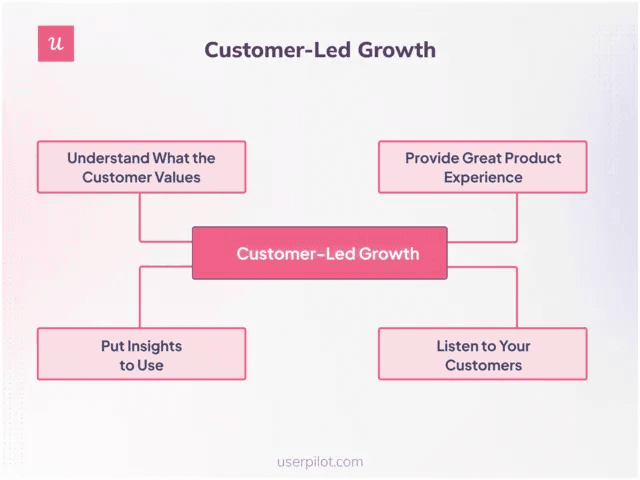
What is product-led growth?
Product-led growth (PLG) is a popular growth strategy that relies on the actual product experience for acquiring new customers and driving revenue. PLG companies usually have a free trial or a freemium pricing model to get potential customers through the door.
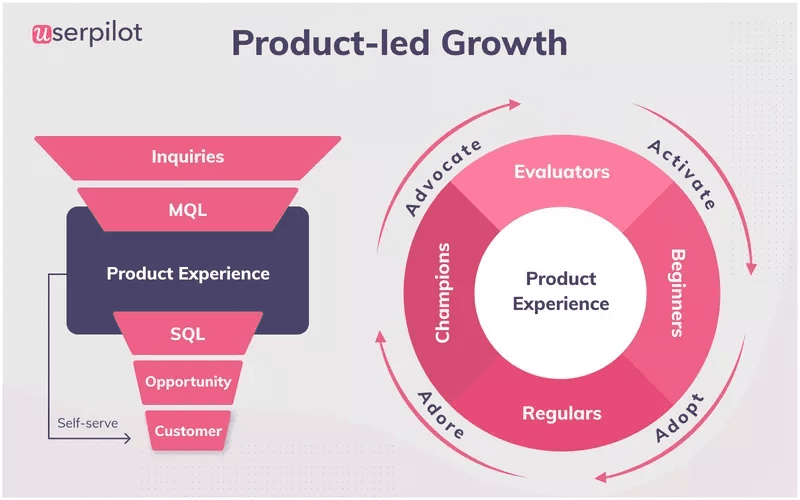
Customer-led growth vs product-led growth: Which is more important?
The short answer? Both.
They go hand in hand. Coupling both growth strategies will help you scale customer acquisition faster and increase customer retention. Here’s how:
Product-led growth is focused on improving the product and using it to drive value. Things like free trials and freemium plans help PLG businesses get more customers.
On the other hand, customer-led growth is about making the product better based on user feedback. When you collect customer insights and turn those insights into actual product improvements, you’ll naturally promote product-led growth at the same time. That being said, you need users in the first place to give you insights for customer-led growth. If you’re brand new, focus on a product-led growth strategy first.
As you grow, you can leverage user feedback to make product improvements.
Strategies for driving product-led growth
Learn about the strategies that product-led companies use to get more customers.
Give users access to premium features during onboarding
Product-led pricing models usually work two ways:
- Users get a free trial where they can test out the product in its entirety for a limited time. Don’t upgrade? They lose access after the trial’s over.
- Users can use a free account indefinitely with limited features. Premium features are reserved for paying customers.
But, there are limits to both pricing models that can slow down revenue growth. This is where the SaaS reverse trial comes in. In a reverse trial, users access the full functionalities of your tool for a limited time and get downgraded to a free plan if they don’t upgrade.
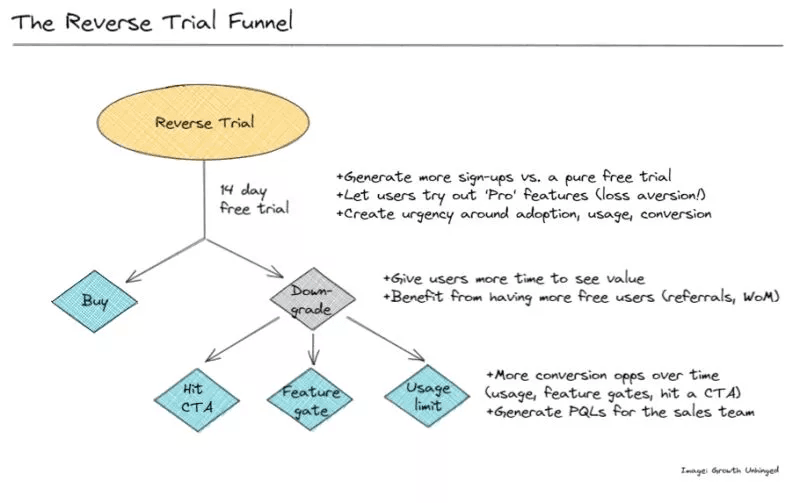
The reverse trial is a great model for most PLG companies. The user gets to experience premium features and added value, which makes them more likely to convert. If you’re running on a freemium model, increase the conversion rate to premium by giving users a taste of the premium version of your product.
Use frictionless signup flows and get users into the product as soon as possible
In the product-led approach, the focus is on the product and the value it provides. It’s your job to build a path that helps potential customers experience value faster, making them more likely to upgrade to a paid plan. How do you do this?
Here are a few optimizations you can make to make signing up faster:
- Provide single sign-on options
- Remove unnecessary steps
- Skip upfront payment
Check out Airtable’s frictionless signup flow. They make jumping into the product a breeze.
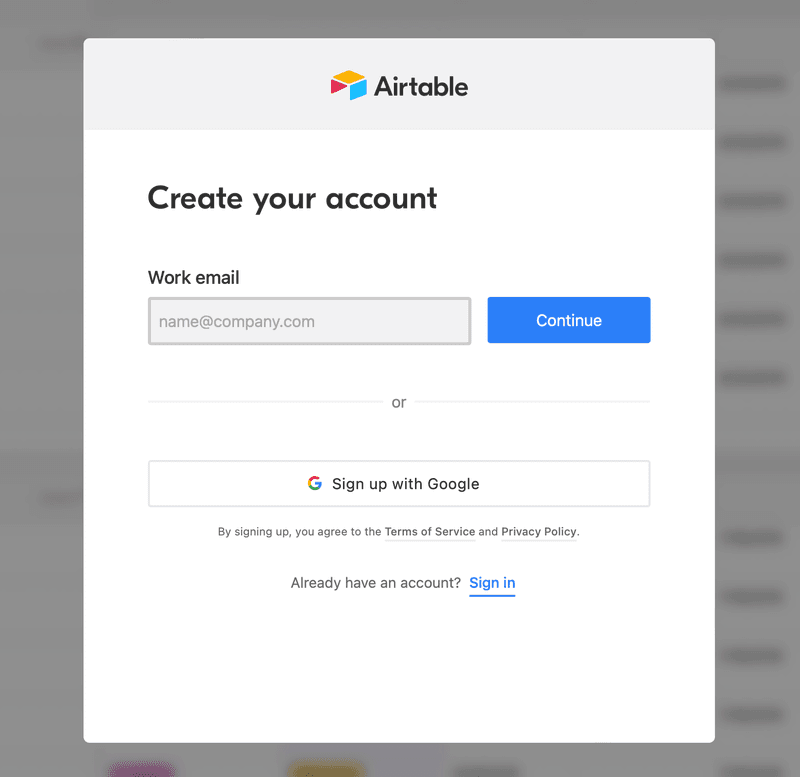
Personalize empty states and shorten the time to value
Empty states are what users see when they first sign up and don’t have any data to show yet. They’re boring, blank screens that leave people wondering, “Where do I start?”
Empty states hurt your product’s time to value. They kill all initial excitement and motivation someone had to explore your product. Instead, replace empty states with meaningful content to inspire new users. Here are a few ideas:
- Add a welcome screen modal with a CTA button that guides them on the first action they should take.
- Use demo content to fill empty spaces. Users will get a bigger grasp of what goes where.
- Encourage users to start with a template. Display the most relevant templates for them to choose from.
Let’s look at an example.
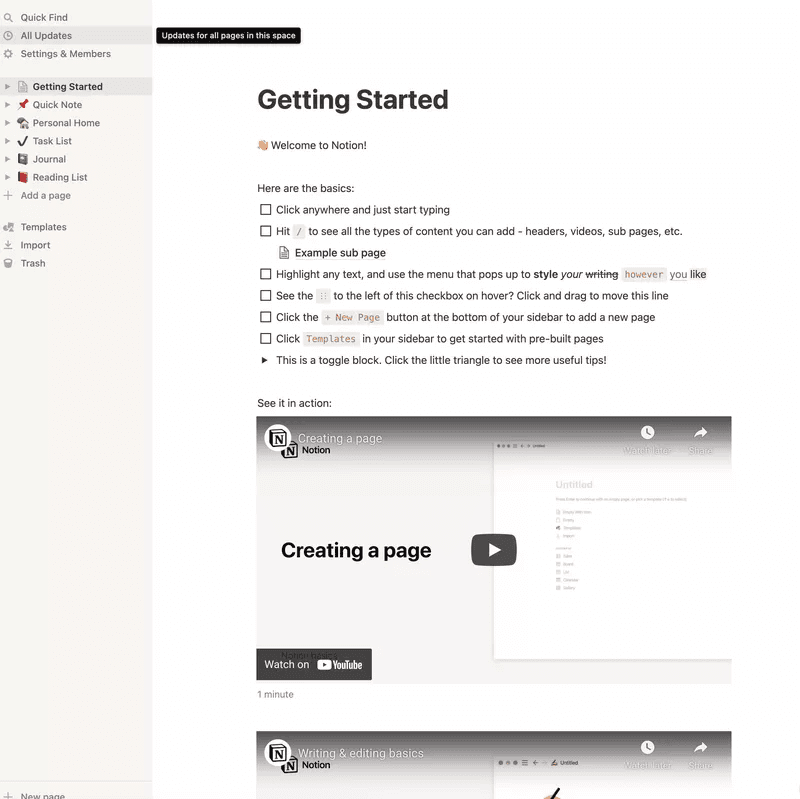
See how Notion uses empty states to immediately show the value of their product?
Instead of an empty state, the Notion team has a demo doc showing everything you can add – videos, to-do lists, different pages, etc. They finish off the doc with a call-to-action to start with one of their pre-built templates.
Activate users with onboarding checklists
Onboarding checklists prompt users to engage with the core features of the app and experience value quicker.
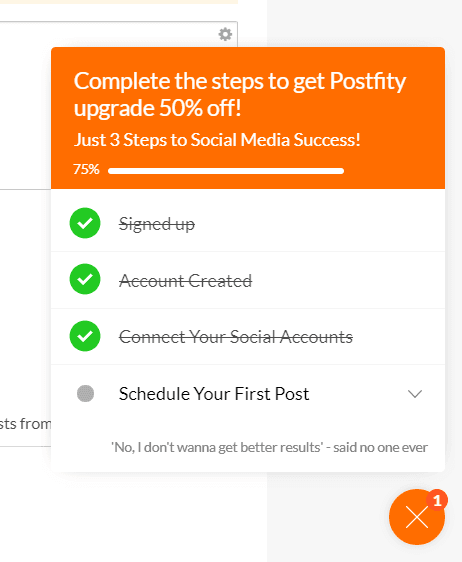
Why are onboarding checklists so effective? They lean on a famous psychology principle called the Zeigarnik Effect. This effect happens when people experience tension from seeing unfinished tasks. If users can see what tasks they have yet to complete, they’ll feel motivated to finish them. Elements like progress bars dial up that tension even more.
Drive feature adoption with interactive in-app experiences
Don’t stop at activation – drive repeated engagement and feature adoption with interactive in-app experiences. Even after onboarding is over, a PLG strategy should rely on in-app guidance to remind users of the value of the product.
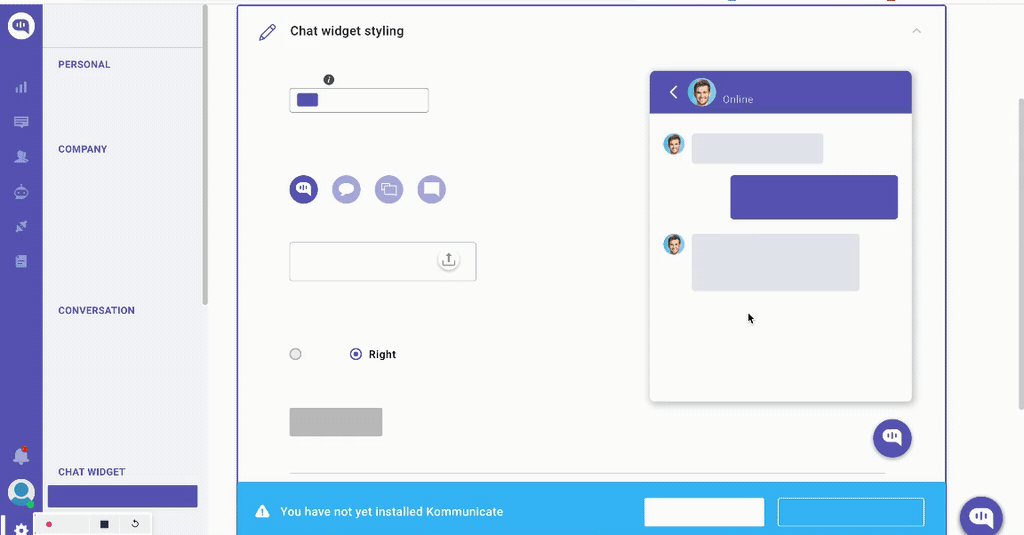
In-app customer education like interactive walkthroughs and chatbots help to:
- Drive feature adoption.
- Encourage expansion.
- Improve customer success.
Provide help when users need it with self-service support
Self-service support reduces friction in the customer journey – and friction is the enemy of product-led growth.
Whenever customers run into an issue, they expect help right away. They don’t want to wait hours or days for your support team to answer. Especially if they’re testing out your product for the first time and aren’t invested in it yet. They’ll just move on to the next solution.
The self-service model is here to save the day by giving customers contextual and timely support. Create a comprehensive resource hub with:
- Video tutorials
- Webinars
- Documentation articles
- Knowledge bases
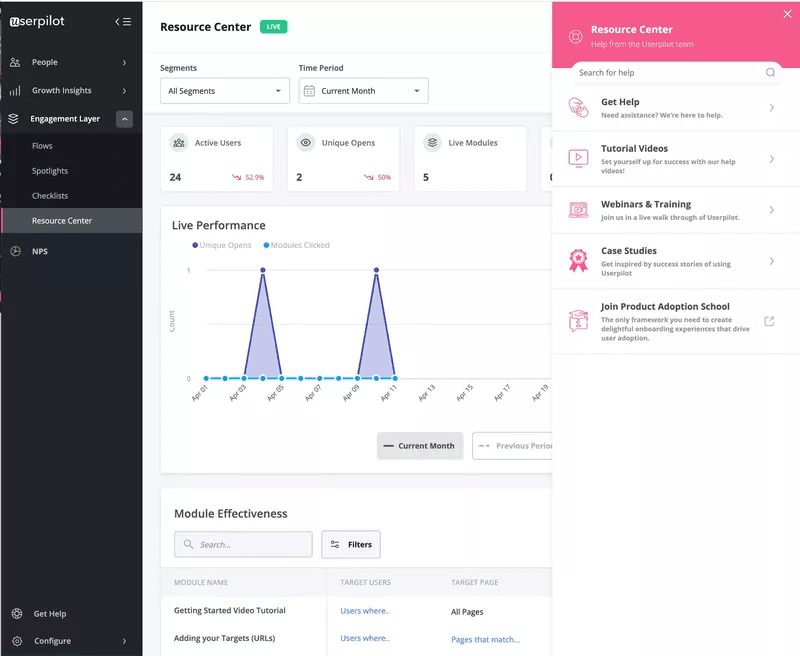
It helps cut down on support costs. Your customers will appreciate it too.
How to drive customer-led growth in SaaS?
Here are some actionable steps you can take to land more happy customers.
Collect customer data and define jobs to be done with a welcome flow
One of the best times to collect customer data is during the signup or onboarding process.
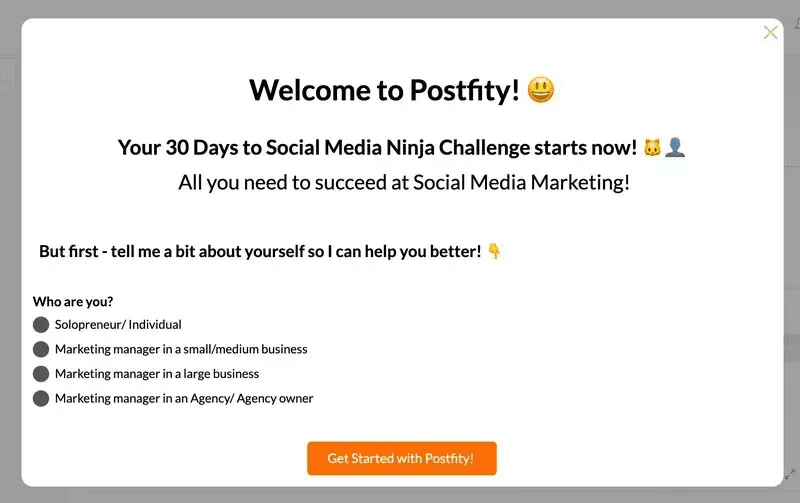
Doing this will help you:
- Understand your customers on a deeper level.
- Learn what they want to achieve with your product.
Use those insights to create personalized in-app experiences from day one. That’s the key to delivering the best customer experience.
Create mobile-first onboarding flows, customizing welcome screens, carousels, and slideouts to deliver personalized messaging.
Collect passive feedback with product usage analytics and remove friction points across the customer journey
Feedback doesn’t have to always be direct. Customers don’t always know what they want. Passively collect customer insights by tracking in-app behavior with an analytics tool.
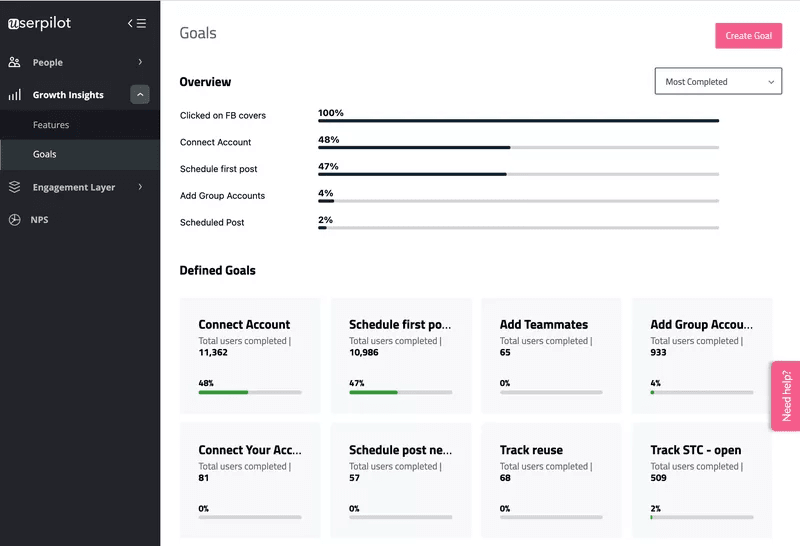
Product usage analytics help you:
- Understand how customers are interacting with the product.
- See where they get stuck and don’t progress into the next stages.
- Determine what interactions lead to low NPS scores.
Using this data, you can identify and eliminate friction from the relevant touch points.
Use microsurveys to collect user feedback and improve the customer experience
On top of tracking user behavior, ask for feedback directly. Send out customer satisfaction surveys (such as CSAT or CES) to understand what’s causing friction. There are two types of in-app surveys:
- Trigger a survey based on a specific user action, like interacting with a feature for the first time or reaching a milestone in their journey.
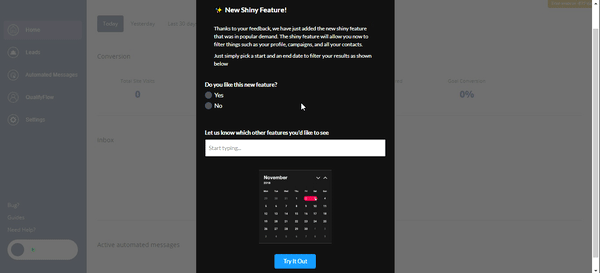
- Collect passive feedback by adding feedback widgets across your product’s UI.
Passive feedback is the most contextual since users voluntarily reach out to give it to you. They’re either amazed by a feature or frustrated with it, so both cases can provide powerful insights.
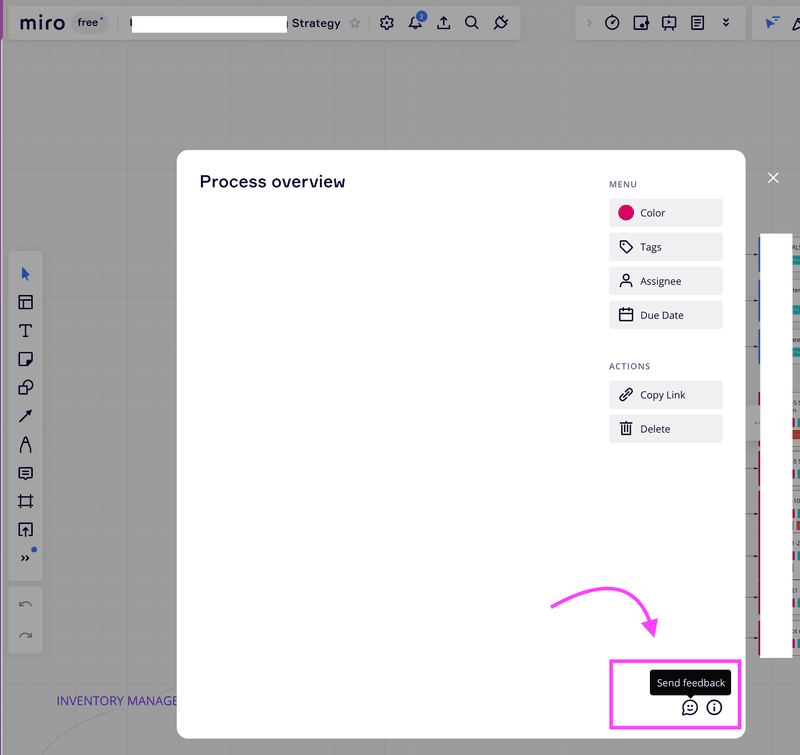
- Mobile surveys are a quick way to measure customer satisfaction, gather real-time feedback, and boost engagement.
Tag NPS responses to identify the patterns behind low customer satisfaction
NPS surveys ask customers how likely they are to recommend your product to their network. Responses are limited unless you ask follow-up questions that give more context around the scores.
Once you have this qualitative data, organize responses by tagging them by theme or keyword. Then, look for patterns that explain low customer satisfaction scores and see what common problems customers are facing.
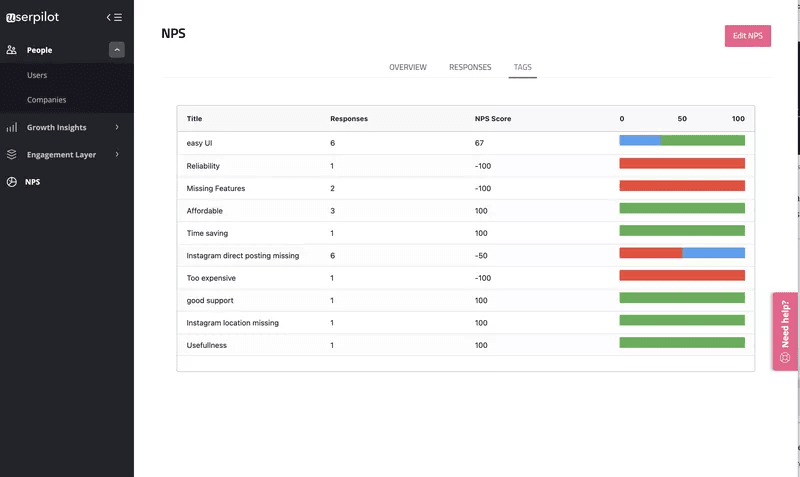
For example, did most responses include a request for a specific feature? Or were many responses bug-related? Simply collecting data doesn’t help anyone if you don’t act on the insights. Act on that data with a two-step process:
- Improve the product directly by fixing bugs or adding commonly-requested features.
- Segment users based on the NPS scores and responses – label high scorers as promoters and low scorers are detractors. Reach out to thank the promoters. Help the detractors.
Keep customers in the loop with in-app communication
You’ve done the work to collect user feedback and turn those insights into actions with product improvements. What’s next?
Now it’s time to close the customer feedback loop with in-app communication. Acknowledge the feedback your customers shared and describe the impact it made on the product. Let users know once your bug fixes, new features, or other changes have gone live. It will make them feel considered and appreciated.
If you don’t close this feedback loop, customers won’t know that you’re considering their feedback. You’ll miss out on an amazing opportunity to strengthen customer relationships.
Take some inspiration from Postfity.
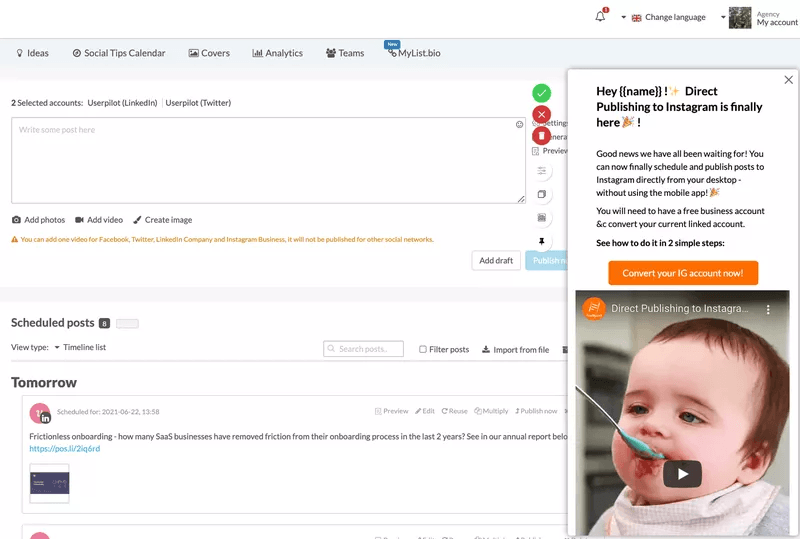
Their users kept requesting a new feature – Direct Instagram publishing. Since they’re a social media scheduling platform, it made sense to add this feature, so feedback helped to prioritize it in their product roadmap. When the Direct Instagram publishing feature went live, they closed the customer feedback loop by using an in-app slide-out to announce it.
Run Voice of the Customer Programs
Voice of the Customer (VoC) is a term that describes your customer’s feedback about their experiences with and expectations for your products or services.
Classic user feedback data collection focuses on all users as a whole. A VoC program shifts the focus to the individual customer. Collect data for your VoC program using one of the following methods:
- Analyze in-app behavior and website behavior.
- Run NPS surveys.
- Use in-app microsurveys.
- Analyze live chat support conversations.
- Conduct customer interviews.
- Track brand mentions on social media.
- Analyze customer product reviews.
Use a customer-facing roadmap to collect insights
Product roadmaps are typically private documents shared only with the internal team, however, some product teams choose to share theirs publicly. This is called a “customer-facing roadmap” or “public roadmap”.
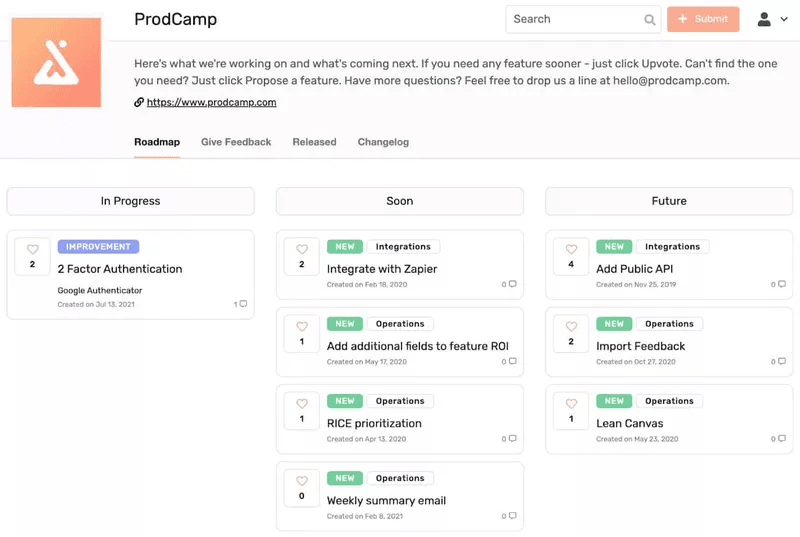
What are the advantages? It keeps customers in the loop and allows them to provide feedback on what they want to see next. That way, the product management team can prioritize changes based on actual customer demand.
Not all feedback should be implemented
Not all feature requests should be honoured. Avoid the feature fallacy trap. This is the belief that the next feature you build will change everything and skyrocket you to unicorn status.
The answer to hyper-growth isn’t always piling on new features. Growth is more likely the result of:
- Nailing down product-market fit with better positioning.
- Fixing poor UX.
- Improving onboarding and product education.
Of course, shipping new features are important to enhance the product experience. But only if that new feature is something your customer needs and it fits with your product’s story. It’s your job in the end to offer the best product and experience that helps customers get their job done. All without diluting your product position and value.
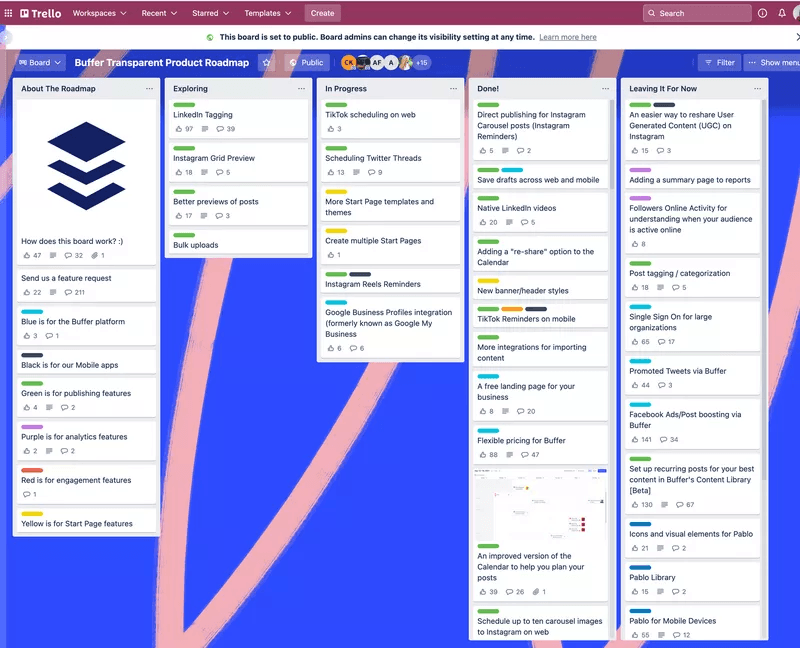
Conclusion
With thousands of SaaS companies out there in such a competitive space, you need a robust business growth strategy that helps you stand out from the rest. Many software companies rely on a sales-led approach with big sales teams, leading to a high customer acquisition cost.
But, the product-led era is here and it’s thriving.
One of the key reasons why the number of product-led growth companies is only getting higher is because it’s a scalable, cost-effective and user-friendly way to land loyal customers. Couple that with a customer-led strategy where you routinely collect and implement customer feedback, and you’re unstoppable.
Want to try out some of these customer-led and product-led growth strategies mentioned in this blog? Get a Userpilot Demo and see how you can catapult your customer acquisition and user engagement.






